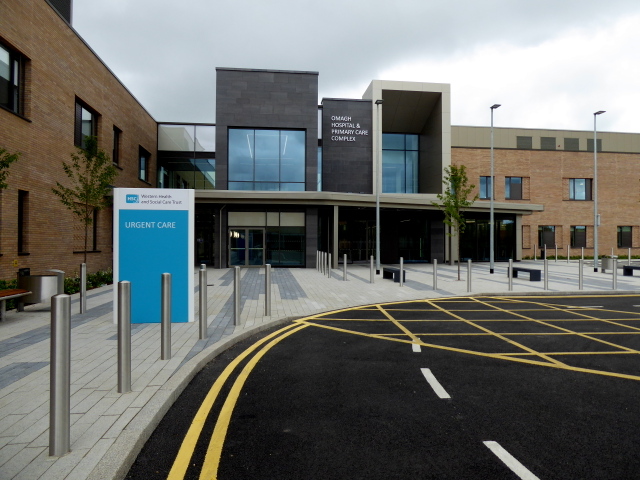
Across the developed world, governments are striving to transform how they deliver and manage health and social care in a way which is fit for a modern context. That context includes the increasing demands placed on these services by ageing populations (often living with multi-morbidities), constrained resources, technological advances and rising patient expectations.
Northern Ireland has not been immune to these increased demands and to the realisation of the need for real strategic change in delivery and suitable governance of its health and social care services.
Transformation of service delivery
This change for Northern Ireland gathered pace in June 2011 when the then Health Minister announced a review of the provision of health and social care services and subsequently appointed a Review Panel in August 2011.
The Review was clear about its purpose, namely, what changes would make the greatest difference to outcomes for patients, users and carers. The aim was to bring forward recommendations for the future shape of services and provide an implementation plan. It became known as Transforming Your Care (TYC).
TYC engaged with stakeholders, reviewed local and international evidence and identified 12 principles for change to underpin a new model of care. Case studies were developed to explain the impact of the model on ten major areas of care. The model of care included:
- Care as close to home as practical;
- ‘Shift left’ of resources from hospitals to community; and
- Changing role for general practice via 17 Integrated Care Partnerships.
Recommendations included: services for older people to encourage independence; reducing hospital admissions for long-term conditions, more community respite care; reconfiguring the acute hospital network and making urgent-care locally available.
The Health and Social Care (HSC) Board and Trusts produced implementation plans, with Local Population Plans finalised by October 2013. Key messages from consultation included:
- The need to ensure that there is sufficient investment to make change happen, and that alternatives are in place and working effectively before change occurs to current services.
- A focus on how we support carers as a key partner in care provision;
- Support for staff who are the key enabler to implementing TYC;
- Importance of engaging with the voluntary and community sector in designing services and in developing their capacity to be key partners in the delivery of TYC; and
- Need for greater cross governmental / agency working to address health inequalities and be more ‘joined up’ in our plans for implementation.
Keeping tabs on progress
The Health Committee undertook three TYC-related reviews over the mandate:
- Workforce planning;
- Supported living for older people; and
- Health inequalities and learning disability.
Its workforce planning review (2015) showed the vision was still supported by stakeholders but concerns included a lack of:
- Clear performance indicators;
- Implementation detail; and
- Resources for the ‘shift left’.
The shift of £83m from hospital to community is not yet complete. Around £45m was moved by November 2015 with a large portion spent on learning disability/mental health resettlements. The Northern Ireland Human Rights Commission Inquiry into emergency healthcare (2015) found that less funding than recommended had been provided for implementation and concluded that TYC, in effect, had been ‘parked’ while emergency care departments continued to struggle.
In June 2015, the Department of Health, Social Services and Public Safety advised the Committee that TYC was not a ‘plan’ to be completed, but an ‘ethos’ behind commissioning services. This approach raises questions around monitoring, governance and funding of the implementation.
Reform of governance: The Donaldson Report
In April 2014 the then Health Minister, Edwin Poots, commissioned Sir Liam Donaldson to advise on ‘governance’. His report The Right Time, The Right Place presented ten recommendations, including:
- An impartial international expert panel to review configuration of the HSC;
- Redesign of commissioning; and
- A new costed, timetabled, TYC implementation plan.
The governance-led report recognised that TYC contained good ideas but that stakeholders had lost faith in its implementation.
Current directions
Transformation ‘on the ground’ has been unclear to some stakeholders who highlighted to the Committee that Trusts were reducing services (due to budgetary pressures) that should be expanding to implement TYC, such as decreased numbers of community nurses and cuts to education/training budgets for nursing/midwifery. Many were unsure where savings on the acute side had been reinvested in community services.
Transformation seems to have been gathering pace since Simon Hamilton became Health Minister in the latter part of the mandate. He initiated reform to build on TYC and the Donaldson Report including:
- November 2015 – reform of commissioning with closure of the HSC Board and creation of a directorate within the Department;
- January 2016 –- appointment of an expert panel, with a clinical and international perspective, to lead debate on configuration of services; and
- March 2016 – £30m ‘Transformation Fund’ for projects focused on innovation/prevention/collaboration – to realise the vision of TYC and develop a world-class system.
Recent Departmental press releases sought to highlight progress, e.g.
- Staffing increases over past five years e.g. number of nurses/midwives (9%) and allied health professionals (18%);
- Nursing – 15% increase in training places; and £1.25m from ‘Transformation Fund’ for District Nursing/Health Visiting; and
- Investment of over £7million in GP-led services, up to £10million in infrastructure loans and up to 300 pharmacists in surgeries by 2020/21.
Monitoring the transformation of the HSC has been an Assembly priority and no doubt will continue to be so, to ensure changing services are adequately resourced and patient, carer and staff focused.